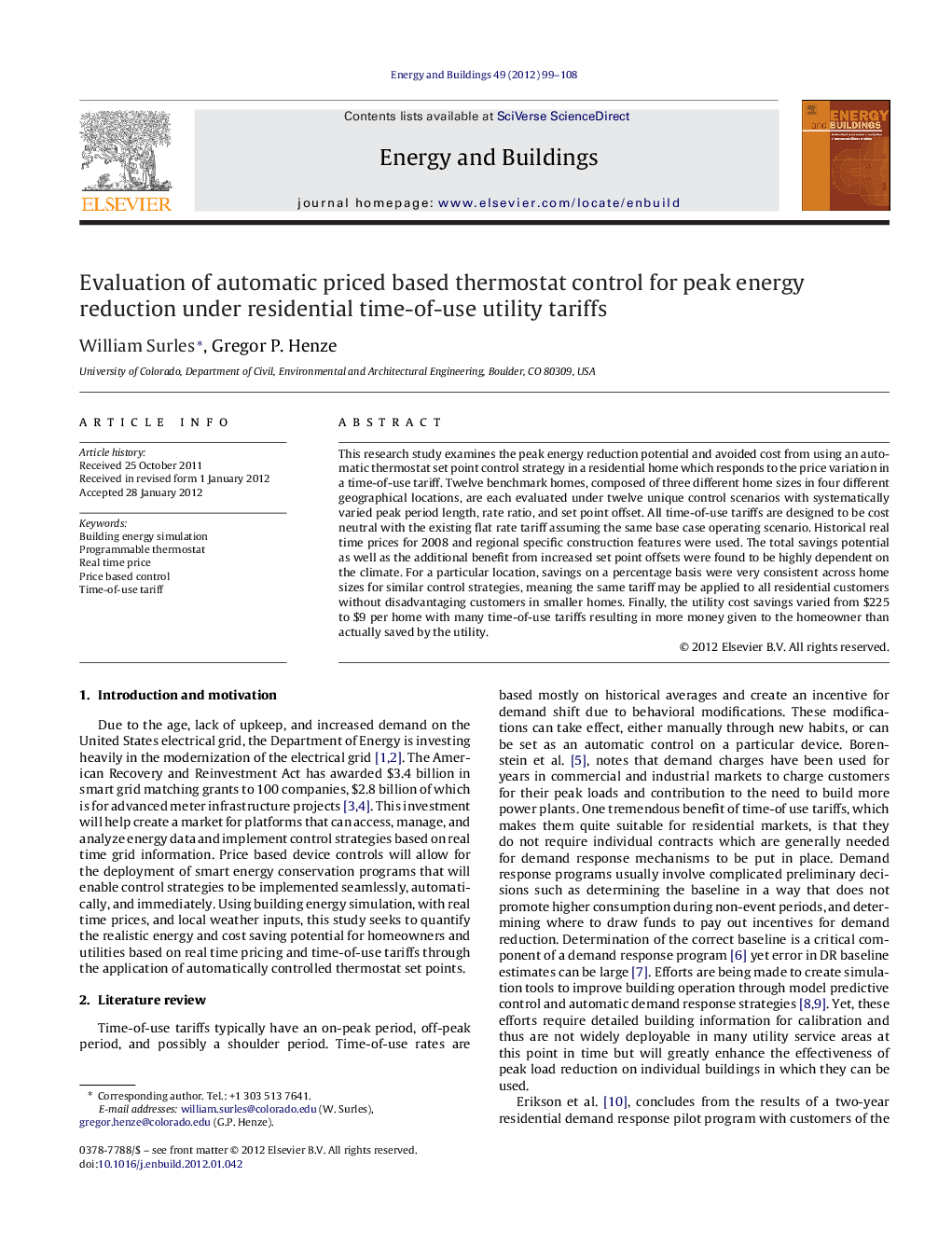| Article ID | Journal | Published Year | Pages | File Type |
|---|---|---|---|---|
| 263910 | Energy and Buildings | 2012 | 10 Pages |
This research study examines the peak energy reduction potential and avoided cost from using an automatic thermostat set point control strategy in a residential home which responds to the price variation in a time-of-use tariff. Twelve benchmark homes, composed of three different home sizes in four different geographical locations, are each evaluated under twelve unique control scenarios with systematically varied peak period length, rate ratio, and set point offset. All time-of-use tariffs are designed to be cost neutral with the existing flat rate tariff assuming the same base case operating scenario. Historical real time prices for 2008 and regional specific construction features were used. The total savings potential as well as the additional benefit from increased set point offsets were found to be highly dependent on the climate. For a particular location, savings on a percentage basis were very consistent across home sizes for similar control strategies, meaning the same tariff may be applied to all residential customers without disadvantaging customers in smaller homes. Finally, the utility cost savings varied from $225 to $9 per home with many time-of-use tariffs resulting in more money given to the homeowner than actually saved by the utility.
► Peak energy and cost reducton potential in residential homes. ► Automatic thermostat set point control strategy with time-of-use tariff. ► Benchmark homes in different geographical locations systematically varied. ► Broad range of savings potential dependent on climate but not home size. ► Improper tariff design will can cause utility to lose money.
